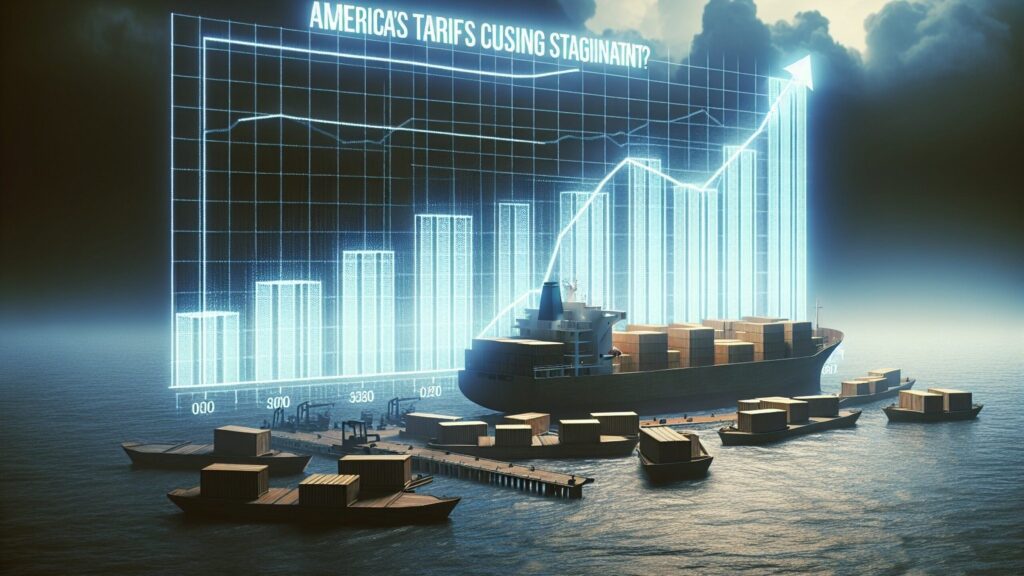The impact of the trade war extends far beyond duties and increased costs.
Read also: Navigating U.S. Tariff Changes: Operational Strategies for Importers in 2025
A recent analysis by our team at Kearney estimates that Fortune 500 companies are spending more than 1,000 hours a week on tariff-related meetings and tasks such as contingency planning and scenario modeling. The top 2,000 US-based multinationals, meanwhile, lose 2 million-plus working hours per week, equating to nearly $10 billion a year in productivity losses. Including small and medium-size enterprises, the total economic impact on the United States could be as high as $100 billion a year.
Impacts on innovation and value creation
Tariff volatility also contributes to decision paralysis, delayed investments, and employee stress. Supply chain leaders that are focused on minimizing disruption and chasing stability can’t zero in on long-term strategic planning. The result: a decreased emphasis on supply chain network optimization, new market entry, and talent development.
Innovation efforts and transformation programs also suffer, as time-starved leaders struggle to evaluate new technologies or pilot digital tools, redesign product flows, or adopt more advanced planning systems. Rather than a strategic imperative, value creation becomes a reactive afterthought.
Significant loss in productivity
In this turbulent environment, “what-if” scenario modeling exercises that assess the impacts of new policies must contend with constantly shifting assumptions, draining analytical resources. Frequent consultation with legal and compliance teams, meanwhile, are essential to assess new tariffs, customs regulations, and trade classifications. All of these efforts require coordination across global jurisdictions, which translates into more people spending more time in meetings.
Businesses must also react to cost fluctuations by recalibrating pricing strategies for both suppliers and customers. This involves finance, sales, procurement, and product teams—with each requiring alignment, review, and sign-off. Demand and supply forecasts must be constantly updated as conditions shift. These constantly moving targets require time to (re)align—taking away critical time from business-as-usual activities.
Delays in strategic agenda and shifting relationships
In addition to consuming time, tariff-fueled disruption creates a number of new problems to solve. Organizations must revisit make-versus-buy decisions, reassess organizational structures, and consider shifts in supplier and logistics-provider relationships. Commercial renegotiations on terms, lead times, penalties, and service levels are required in response to changes in cost and capacity. Uncertainty also creates new risks for planned investments in automation, infrastructure, and technology, requiring detailed scenario analysis and stakeholder alignment—again, delaying decisions and transformational initiatives.
Create simplified governance model
With uncertainty becoming the new normal, organizations can no longer rely on traditional decision-making channels. Today’s challenges require an updated operating model that enables nimble responsiveness and is dedicated to dealing with uncertainty. Characteristics include:
- Clearly defined roles and decision rights both within and across key functions (e.g., sales, sourcing, supply chain, government affairs, finance, and engineering) to deal with new changes.
- Cross-functional playbooks that specify who leads scenario planning, who owns communication, and where decisions are made.
- Clarity of purpose to each touchpointwhere every meeting and each forum has a distinct value-add with minimal redundancy.
Without this clarity, too many people get pulled into too many unstructured meetings, draining time and creating friction across the organization.
Avoid the “all hands on deck” reflex
Leadership overreaction is a major hidden cost of trade volatility, as every new headline can trigger a flurry of duplicative or misaligned activity. Discipline from the top is critical to avoid this trap. Leaders must empower their teams and resist the urge to intervene with every new data point. Unnecessary last-minute fire drills create churn, distract from execution, and burn out high-value talent.
Today’s speed of disruption requires that decision authority be pushed to the lowest responsible level. Agile “tiger teams” with deep functional expertise in trade, logistics, legal, and commercial relationships can be empowered and held accountable to deliver rapid, high-quality responses. This allows organizations to move faster without sacrificing alignment or governance oversight.
Institutionalize scenario planning capabilities
Historically an episodic, executive-led exercise, scenario modeling has now become a core operating capability. High-performing organizations are investing in talent and tools that support multivariate scenario planning and enable dynamic “what-if” modeling that goes beyond short-term impact analysis and reactive decision-making. Supply chain and operations teams are leading with foresight, delivering strategic insights that inform capex prioritization, footprint decisions, and long-term supply network design.
Rethink organizational design and accountability
Trade volatility has become a structural feature of global business. To adjust, organizations need to evolve their operating model by elevating the role of trade compliance from reactive risk flagging to proactive scenario shaping.
Moving trade compliance to the supply chain or operations function, to be closer to sourcing and logistics decisions, is one imperative. In addition, companies must establish dedicated geopolitical risk units or embed trade strategists in operational teams. Such steps make it possible to increase responsiveness, create dedicated playbooks, and ensure accountability for decision-making.
Rather than eliminate uncertainty, organizations must absorb and adapt to it. By moving from fragmented, reactive structures to integrated, proactive leadership, businesses can keep pace with the new reality of global trade, a reality of uncertainty and constant change.
The authors would like to thank Tulika Vardhan, and Luca Wernick for their valuable contributions to the article.
About the Authors
Aman Khan and Alyson Potenza are partners and Aleem Damji is a Consultant in the Leadership, Change & Organization practice of Kearney, a global strategy and management consulting firm.

